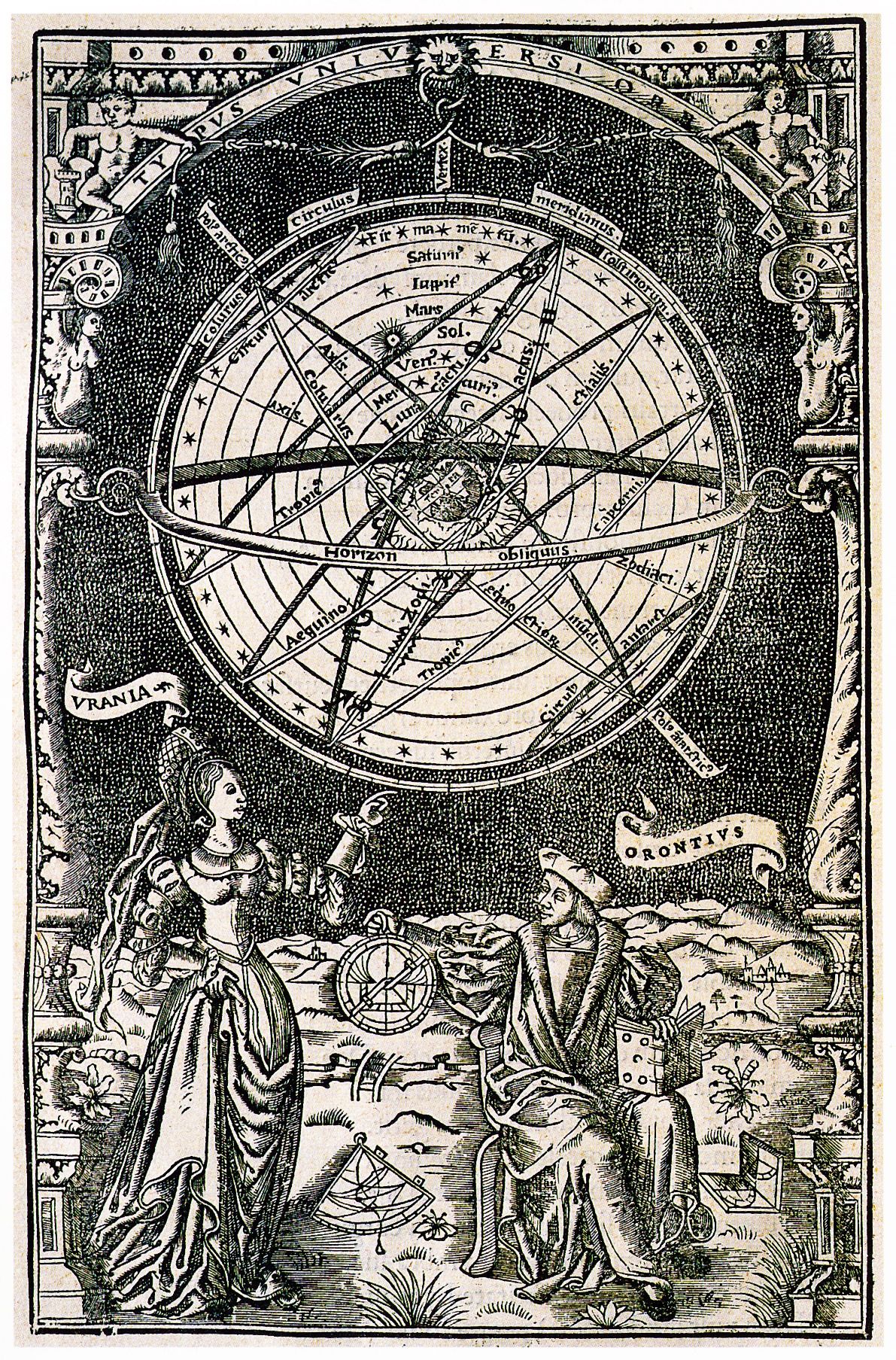Urania with Orontius Finnaeus (Oronce Finé) - from Orontius' book, Cosmographia, 1542
"All things serve and obey the universe; the earth, the sea, the sun, the stars, and the plants and animals of the earth. Our body likewise obeys the same, in being sick and well, young and old, and passing through the other changes decreed. It is therefore reasonable that what depends on ourselves, that is, our own understanding, should not be the only rebel. For the universe is powerful and superior, and consults the best for us by governing us in conjunction with the whole. And further; opposition, besides that it is unreasonable, and produces nothing except a vain struggle, throws us into pain and sorrows."
Epictetus; Carter, Elizabeth. The Complete Works of Epictetus (p. 419). Lazy Raven Publishing. Kindle Edition.
...
"Rare separated first edition of Oronce Fine’s Cosmographia. Mortimer, French, 226; Brun, p. 189; Renouard, Colines, pp. 358-359. It is a revised and enlarged version of the third part of the Protomathesis (1532). This present work is composed of two parts, a first one dedicated to cosmography and a second one to trigonometry.
Oronce Fine (1494-1555) took a course of humanities and philosophy in the college of Navarre, and dropped out of these studies to dedicate himself entirely to mathematics. All the contemporary writers are unanimous in the praises they sing of this professor; They speak of him with admiration, and indeed, his lessons seem to have aroused the greatest interest. All the remarkable men of his time, in the arts and in the judicial authorities, princes, ambassadors, rushed to his lessons: the King himself, it is assured, went more than once. The credit of this professor is to have, thanks to the spark of his teaching, encouraged the study of exact sciences.
In this treatise, the mathematician, astronomer and cartographer Oronce Fine, called by Hoefer “the restorer of mathematics in France”, gives instructions for the drawing up of maps by using as an example the South of France and details three methods for the projection of a world map on a plane surface.
The first part encloses “the description of the fixed celestial sphere used for reference, essential ideas concerning the astronomy of the ‘primim mobile’ (right and oblique ascensions and the duration of diurnal arcs)” (DSB). Fine’s cosmography competed with Sacrobosco and Appian’s ones as much with his authority as with his popularity.
The abundant illustration is composed of a superb frontispiece title illustrated with a large frame of liberal arts, here, in first state, of a large full-page plate representing Urania and the author and of 92 expressive figures, 25 of which published here for the first time. “Of the eighty-nine woodcuts, sixty-four are the original blocks designed by Finé for the ‘Cosmographia’ section of the ‘Protomathesis’. Sixteen of the ‘Protomathesis’ blocks were dropped or replaced” (Mortimer)."
-taken from camillesourget
 |
| Urania with Orontius Finnaeus (Oronce Finé) - from Orontius' book, Cosmographia, 1542. |
Source:
Quote:
Epictetus; Carter, Elizabeth. The Complete Works of Epictetus



Comments
Post a Comment